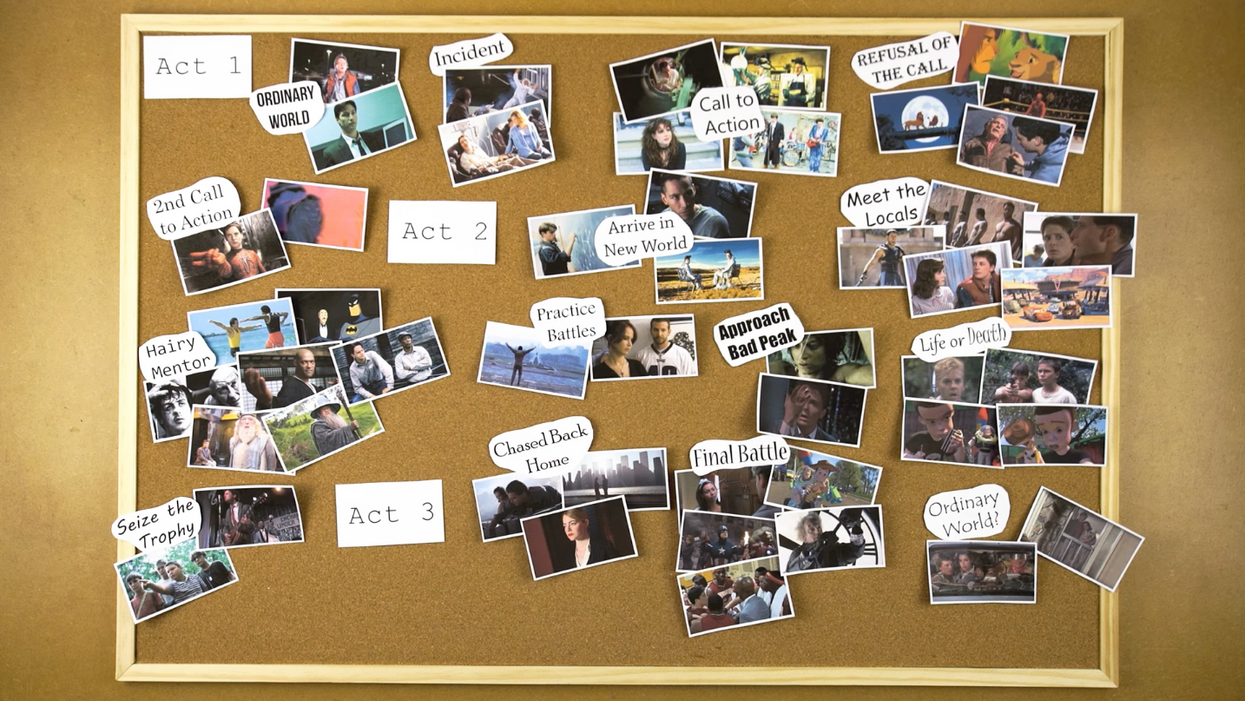Video: 15 Beats of a Classic Story Structure Explained
How do Hollywood screenwriters structure a screenplay?

There's no such thing as "the right way" to write a script, but there are certainly well-trodden paths that countless professional screenwriters take to craft certain story structures. And though these structures might seem overused or formulaic, they do provide a great framework for new writers to cut their teeth on. In this video from The Film Look, we get to take a look at Joseph Campbell's Monomyth, or The Hero's Journey, which is one of the most common story templates, to not only learn what it is and how it works, but to also see how it unfolds in other films as well.
Maybe the best way to start talking about this is by explaining exactly what a "beat" is. Well, a beat is the smallest unit of measurement in a screenplay represented by an event, major decision, or important piece of new information. A beat sheet, or as they call it in the video, a "beat list," is a breakdown of every important moment that occurs in your screenplay in the order in which they occur.
I can't explain how helpful beat sheets are. If you're not currently creating one for every script you write, you should really consider doing so, because not only does it help you see your entire story from a better vantage point, but it can help alert you to any problems, since structural issues usually like to hide in the busiest parts of a 90-page script.
Now, the video talks about 15 different beats, which isn't exactly Campbell's famous Monomyth, which has 12, but the same general idea is there: a hero is called to leave his everyday life to overcome some kind of obstacle, which he can only accomplish by going through a major change by the end of his journey.
There are a great number of screenwriters who aren't fans of Campbell's story structure—or of story structure altogether—but for those who just want to wrap your head around how to write a story, the Monomyth is a relatively straight forward and accessible template.
Source: The Film Look












